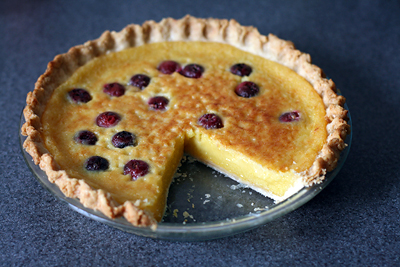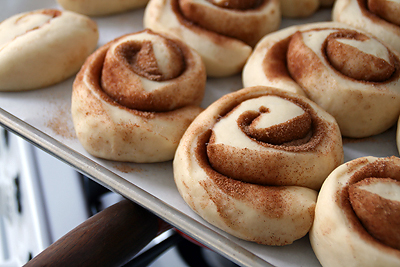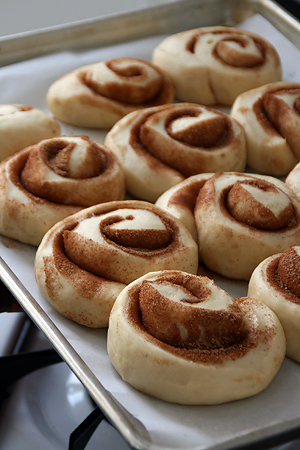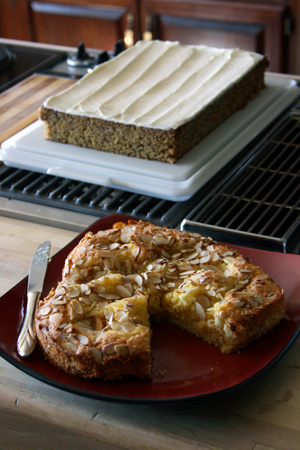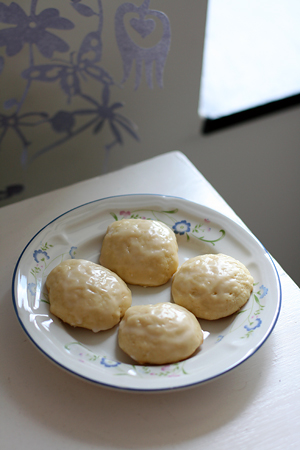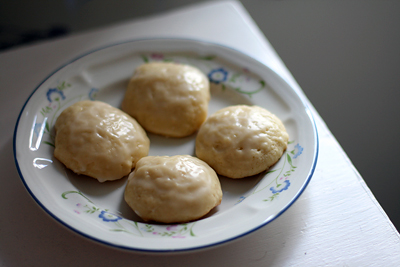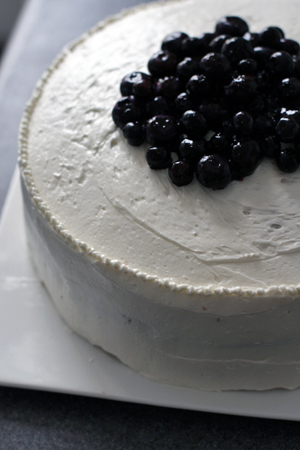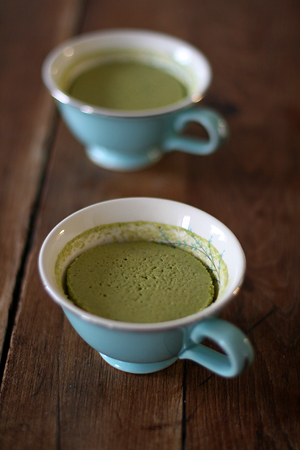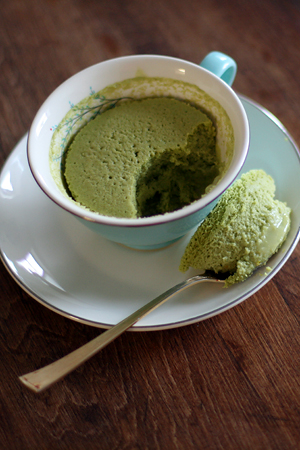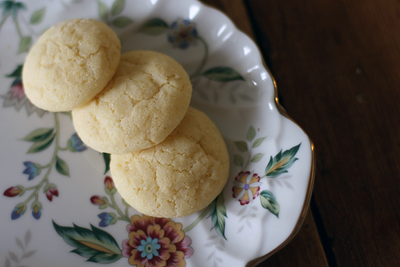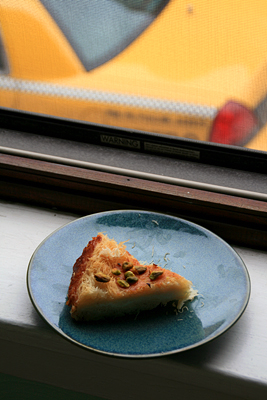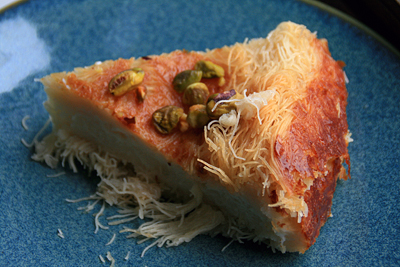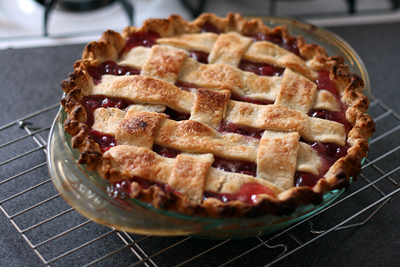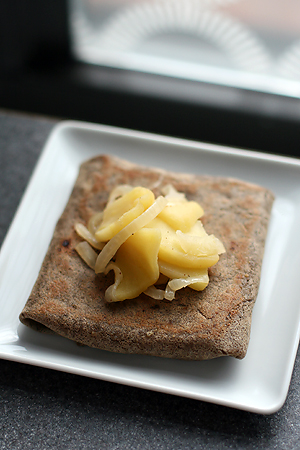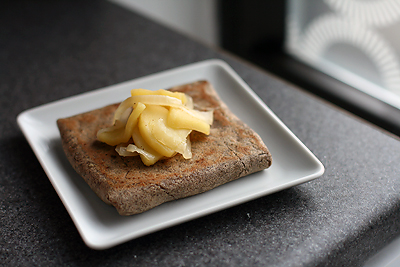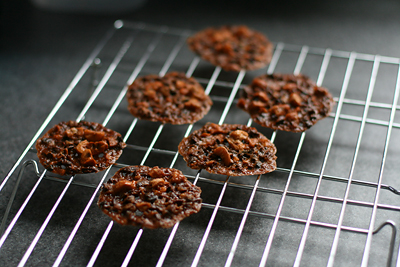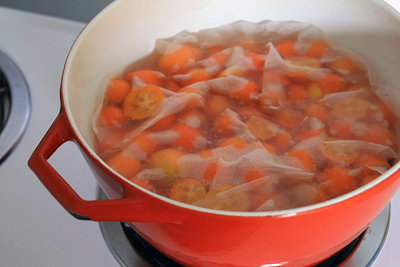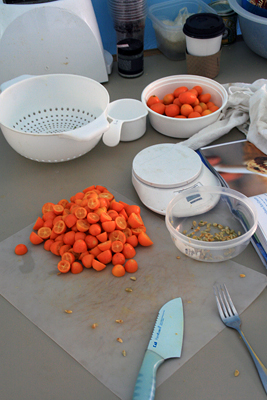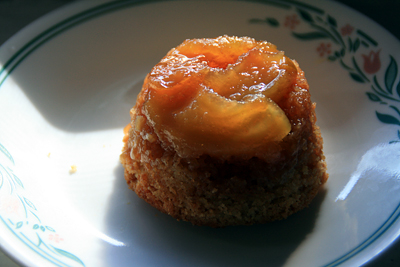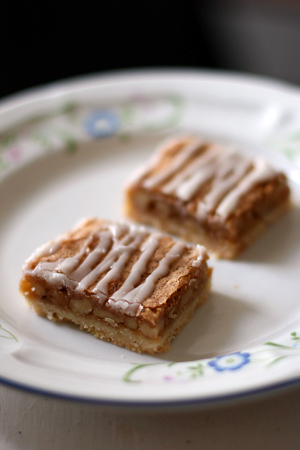
My only copy of this recipe says something like: Make crust, press into pan, bake 15 minutes. Make filling, pour onto crust, spread evenly, bake 20 minutes. Make glaze. Drizzle over lemon filling. Cool and cut into bars.
There's little need for directions when you've made a recipe dozens of times. These lemon bars have been my aunt's signature for years, and I learned to make them from her. I've made them for friends, family, coworkers, roommates, customers, and the occasional random stranger.
I've made these lemon bars so many times that I can't remember if I copied the original recipe correctly. Maybe I forgot some salt or vanilla. I can never remember if "brown sugar" means light or dark. I play around with techniques, ingredients, temperatures, and baking times. The bars always turn out well though.
I can give you some tips: make sure the butter is well combined- large pieces can melt and weaken your crust. Keep an eye on the bars after 13-15 minutes, especially if your oven is hot (I rarely need all 20 minutes). Thicker glaze is better than thinner- if it's too thin, it will soak into the bars instead of hardening into a crisp sugar glaze.
That said, these are easy to make. I think they're simple, elegant, and terribly addictive. To clarify, these aren't the butter-yellow treats most people associate with the term "lemon bars." They consist of a shortbread crust, a sugar/nut filling more typical to pecan bars, and a lemon icing.
Lemon Bars
for the crust:
½ cup unsalted butter, softened
½ cup granulated sugar
1 ¼ cups all purpose flour
Zest of ½ lemon
for the filling:
1 cup brown sugar
¼ cup all purpose flour
Zest of ½ lemon
¼ tsp baking powder
2 large eggs, beaten
1 cup walnuts or macadamia nuts, chopped
for the glaze:
1 cup confectioners' sugar
1 tbsp unsalted butter, melted
2 tsp lemon juice, more if needed
Preheat the oven to 350 degrees.
Make the crust. In a medium bowl, whisk together the flour, sugar, and lemon zest, then cut in the butter. This can also be done with a food processor. Press the dough into a 9x13 inch pan. Bake for 15 minutes.
Meanwhile, make the filling. In another bowl, combine the flour, baking powder, zest, and brown sugar. Mix in the eggs, then add the nuts. Pour filling onto the hot crust. Spread evenly and bake for 15-20 minutes, until evenly browned.
Prepare the glaze. Mix together the sugar, butter, and lemon juice. Add more lemon juice until the glaze is pourable, but still quite thick. Drizzle or pipe the glaze over the hot lemon filling. Cool completely in the pan on a wire rack, then cut into bars. The bars keep, ship, and freeze quite well.




